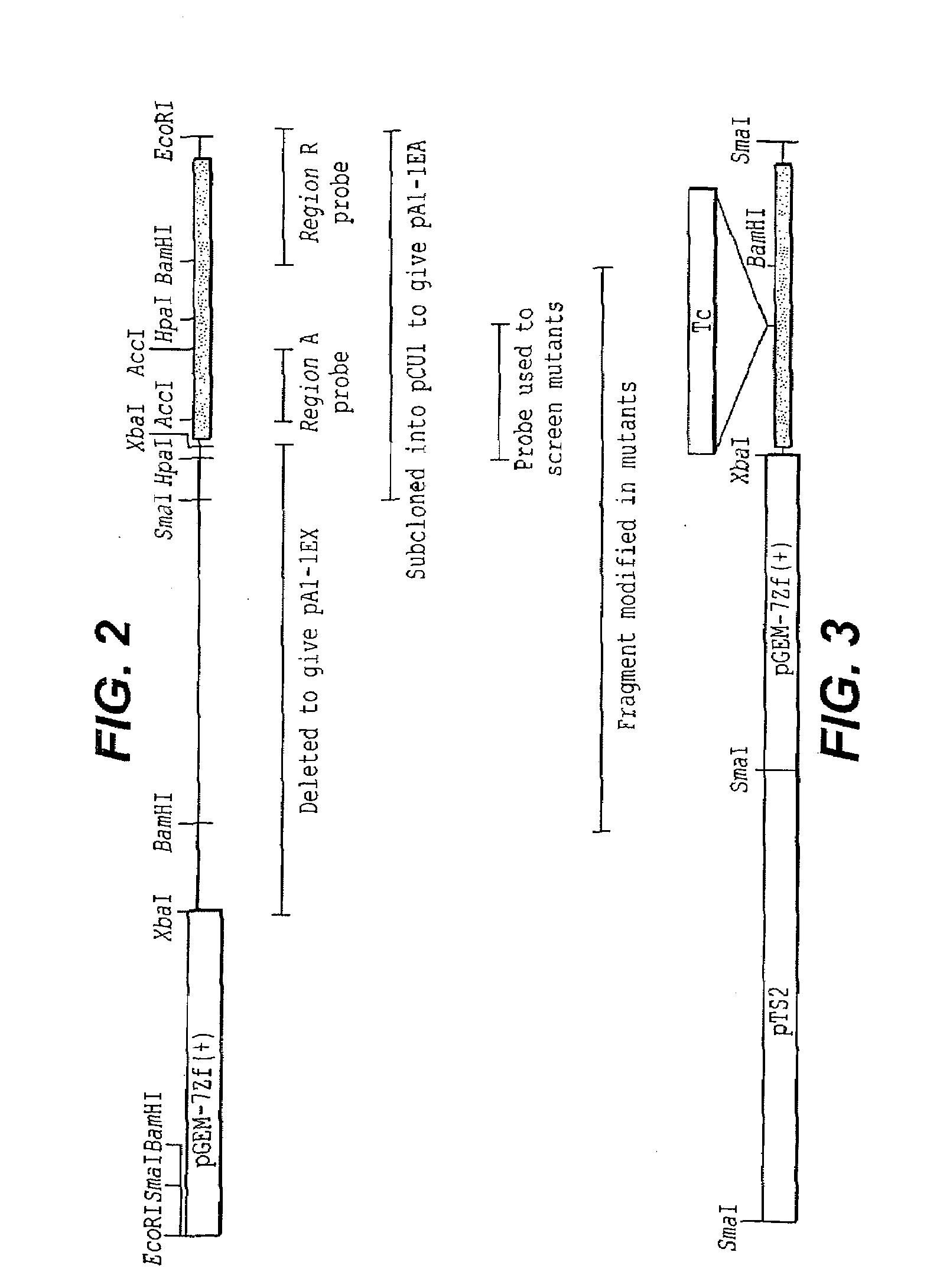Extracellular matrix-binding proteins from staphylococcus aureus
a staphylococcus, extracellular matrix technology, applied in the field of microbiology and molecular biology, can solve the problems of thrombogenic and prone to bacterial colonization, invasive infections, and vascular grafts, and achieve the effect of simple survey method
- Summary
- Abstract
- Description
- Claims
- Application Information
AI Technical Summary
Benefits of technology
Problems solved by technology
Method used
Image
Examples
example 1
Gene Cloning, Sequencing and Expression
[0140]A fibrinogen-binding protein gene, designated clfB, was isolated, cloned and sequenced as follows:
[0141]Bacterial Strains and Growth Conditions
[0142]The E. coli and S. aureus strains used for the cloning and sequencing of clfB are listed in Table 1, below. Escherichia coli was routinely grown on L-broth or agar. S. aureus was routinely grown on trypticase soy broth (Oxoid) or agar. The following antibiotics were incorporated into media where appropriate: ampicillin (Ap), 100 μg / ml; tetracycline (Tc), 2 μg / ml; chloramphenicol (Cm), 5 μg / ml; erythromycin (Em) 10 μg / ml.
BacterialRelevant properties / StrainGenotypeUse in present studySource / referenceC600F−, lacY1, leuB6, supE44,Propagation of lambdaAppleyard, Geneticsthi-1, thr-1, tonA21recombinants39: 440-452 (1954)DH5αF−, ø80dlacZM15, deoR,Recombination deficient, hostHanahan et al, J. Mol.endA1, gyrA96, hsdR17,strain for plasmids and for DNABiol. 166: 557-580(rk−, mk+), (lacZYA-argF)sequenci...
example 2
Production of Anti-ClfB Serum
[0176]Antibodies to recombinant region A were raised in two young New Zealand white rabbits (2 kg) showing no prior reaction with E. coli or S. aureus antigens in Western blots. Injections, given subcutaneously, contained 25 μg of the antigen, diluted to 500 ml in phosphate buffered saline (PBS) emulsified with an equal volume of adjuvant. The initial injection contained Freund's complete adjuvant; the two to three subsequent injections, given at two-week intervals, contained Freund's incomplete adjuvant. When the response to the recombinant protein was judged adequate, the rabbits were bled, serum recovered, and total IgG purified by affinity chromatography on protein A sepharose (Sigma Chemical Co., St. Louis, Mo.).
[0177]SDS-PAGE and Western Blotting
[0178]Samples were analyzed by SDS-PAGE in 10 or 12% acrylamide gels. Isolated proteins and E. coli cell lysates were prepared for electrophoresis by boiling for five minutes in denaturation buffer. For S. ...
example 3
Immunoassay for ClfB Using Biotinylated Recombinant ClfB Region A
[0182]The DNA encoding region A of clfB (encoding residues S45 to N542) was amplified from genomic DNA of S. aureus Newman using the following primers:
Forward:(SEQ ID NO: 17)5′ CGAAAGCTTGTCAGAACAATCGAACGATACAACG 3′Reverse:(SEQ ID NO: 16)5′ CGAGGATCCATTTACTGCTGAATCACC 3′
[0183]Cleavage sites for HindIII and BamHI (underlined) were appended to the 5′ ends of the respective primers to facilitate cloning of the product into the His-tag expression vector pV4. Cloning employed E. coli JM101 as a host strain. The recombinant region A was purified by nickel affinity chromatography.
[0184]Enzyme Linked Immunosorbent Assay (ELISA)
[0185]Immulon 1™ plates (Dynatech™, Dynal, Inc., Great Neck, N.Y.) were coated overnight with 100 μl of 10 μg / ml human fibrinogen (Chromogenix). They were then blocked with 200 μl of 5 mg / ml bovine serum albumin (BSA) for one hour. The plates were then incubated for three hours with 100 μl biotinylated Cl...
PUM
| Property | Measurement | Unit |
|---|---|---|
| apparent molecular weight | aaaaa | aaaaa |
| apparent molecular weight | aaaaa | aaaaa |
| molecular weight | aaaaa | aaaaa |
Abstract
Description
Claims
Application Information
 Login to View More
Login to View More - R&D
- Intellectual Property
- Life Sciences
- Materials
- Tech Scout
- Unparalleled Data Quality
- Higher Quality Content
- 60% Fewer Hallucinations
Browse by: Latest US Patents, China's latest patents, Technical Efficacy Thesaurus, Application Domain, Technology Topic, Popular Technical Reports.
© 2025 PatSnap. All rights reserved.Legal|Privacy policy|Modern Slavery Act Transparency Statement|Sitemap|About US| Contact US: help@patsnap.com



